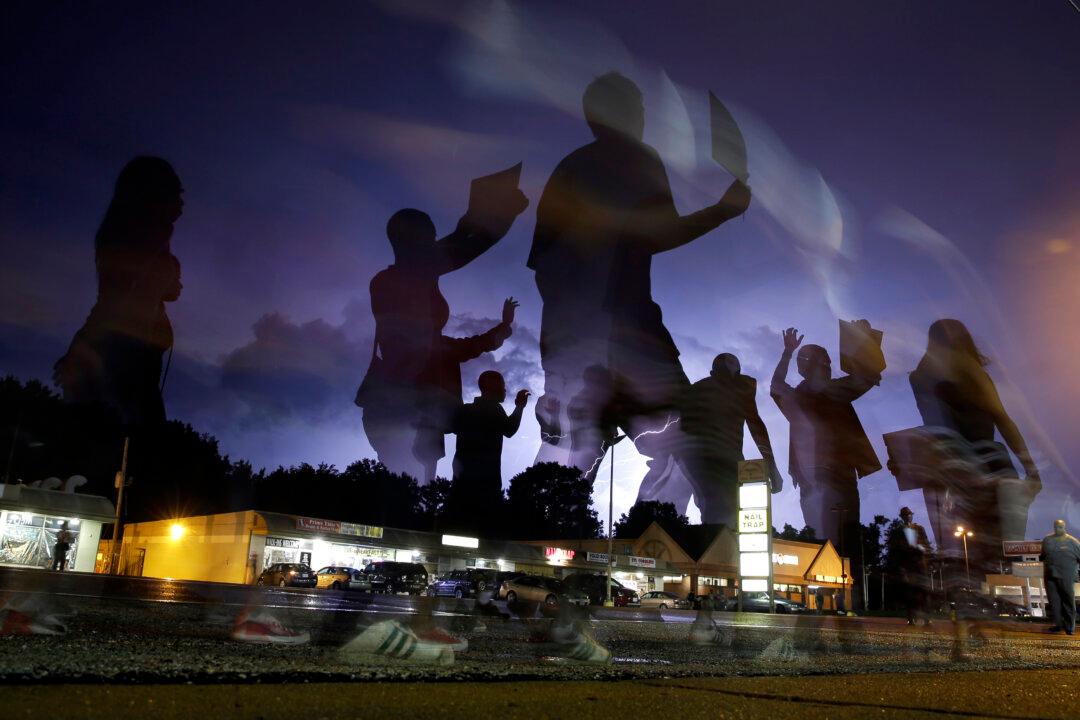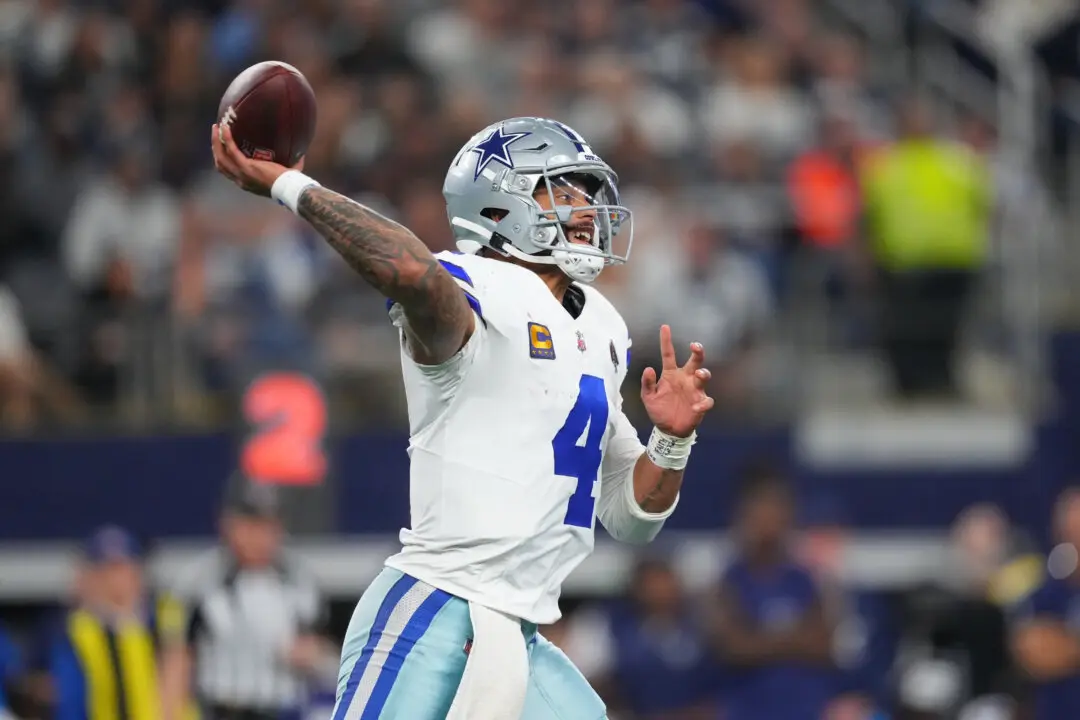FERGUSON, Mo.—One year after the shooting that cast greater scrutiny on how police interact with black communities, the death of 18-year-old Michael Brown in Ferguson, Missouri, will be marked with a somber march and a moment of silence.
The march late Sunday morning begins at the site where Brown, who was black and unarmed, was fatally shot by Ferguson officer Darren Wilson on Aug. 9, 2014. A grand jury and the U.S. Department of Justice declined to prosecute Wilson, who resigned in November, but the shooting touched off a national “Black Lives Matter” movement.
After the moment of silence, a service commemorating the anniversary is planned at a Ferguson church. The events are among several this weekend in Ferguson and nearby St. Louis.
Brown’s father, Michael Brown Sr., led a parade involving several hundred people on Saturday. Brown said his family is still grieving, but he believes his son’s legacy can be seen in the increased awareness of police shootings, and renewed skepticism when officers describe their side of events leading up to those shootings.
Some people who marched in the Saturday parade wore T-shirts with likenesses of Brown or messages such as “Please stop killing us” or “Hands up! Don’t shoot!” which became a rallying cry during the sometimes-violent protests that followed the shooting a year ago. Some carried signs or wore shirts commemorating others who have been killed in confrontations with police.
But the focus of the weekend is largely on Brown, who graduated from high school weeks before the shooting and planned to go to trade school to study to become a heating and air conditioning technician.
Relatives and friends described Brown as a quiet, gentle giant who stood around 6-foot-3 and weighed nearly 300 pounds. But police said Brown stole items from a convenience store and shoved the owner who tried to stop him on the morning of Aug. 9, 2014. Moments later, he and a friend were walking on Canfield Drive when Wilson, who is white, told them to move to the sidewalk.
That led to a confrontation inside Wilson’s police car. It spilled outside, and Wilson claimed that Brown came at him, menacingly, leading to the fatal shooting. Some witnesses claimed Brown had his hands up in surrender.
The shooting led to protests, some violent, and the unrest escalated again in November when a St. Louis County grand jury determined that Wilson did nothing wrong. He resigned days later. The November riots included fires that burned more than a dozen businesses.
The Justice Department reached the same conclusion in March, clearing Wilson. But in a separate report, the Justice Department cited racial bias and profiling in policing as well as a profit-driven municipal court system that often targeted black residents, who make up about two-thirds of Ferguson’s populace.
Ferguson’s city manager, police chief and municipal judge resigned within days of that report. All three were white. The new judge, interim city manager and interim police chief are all black.





